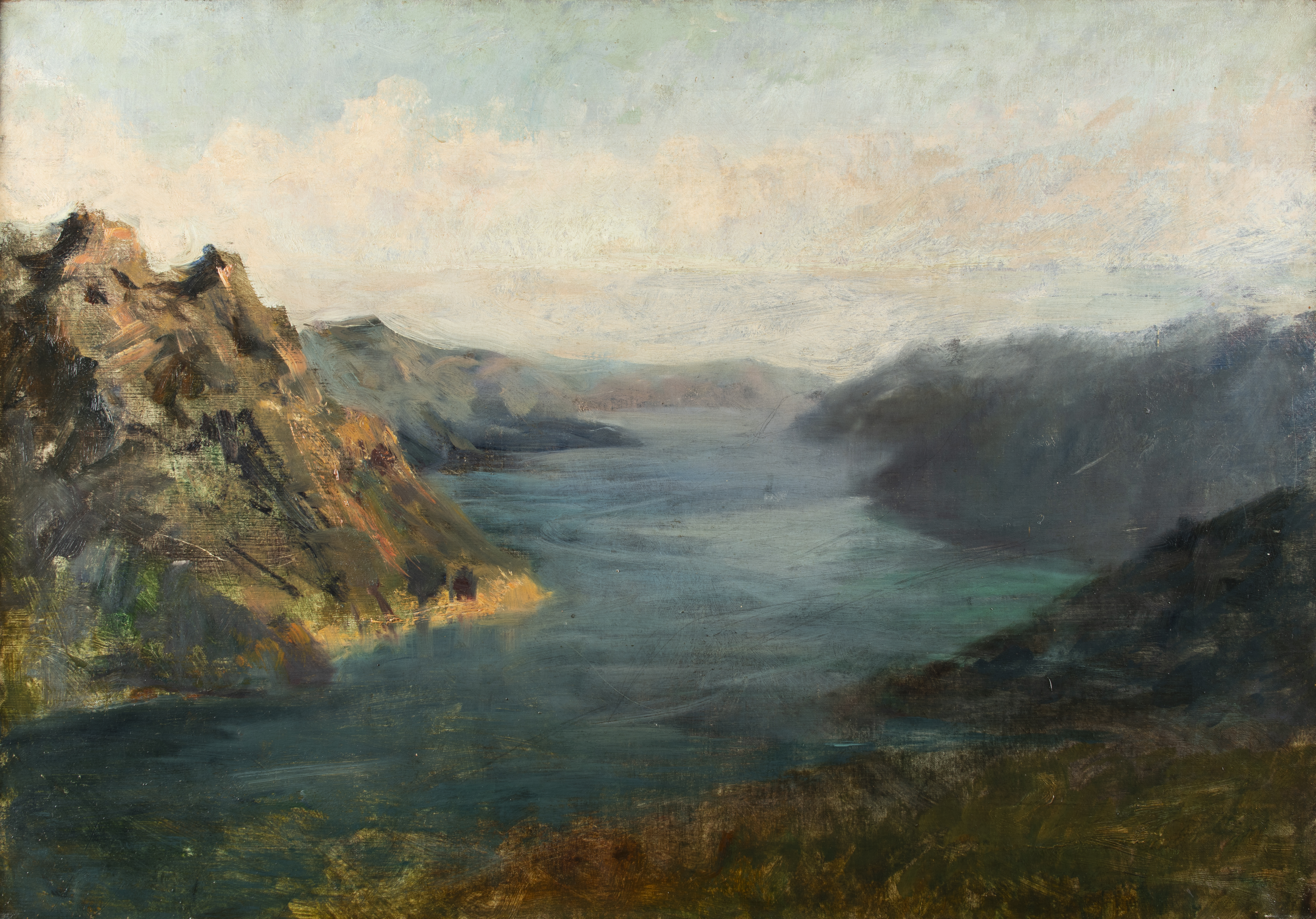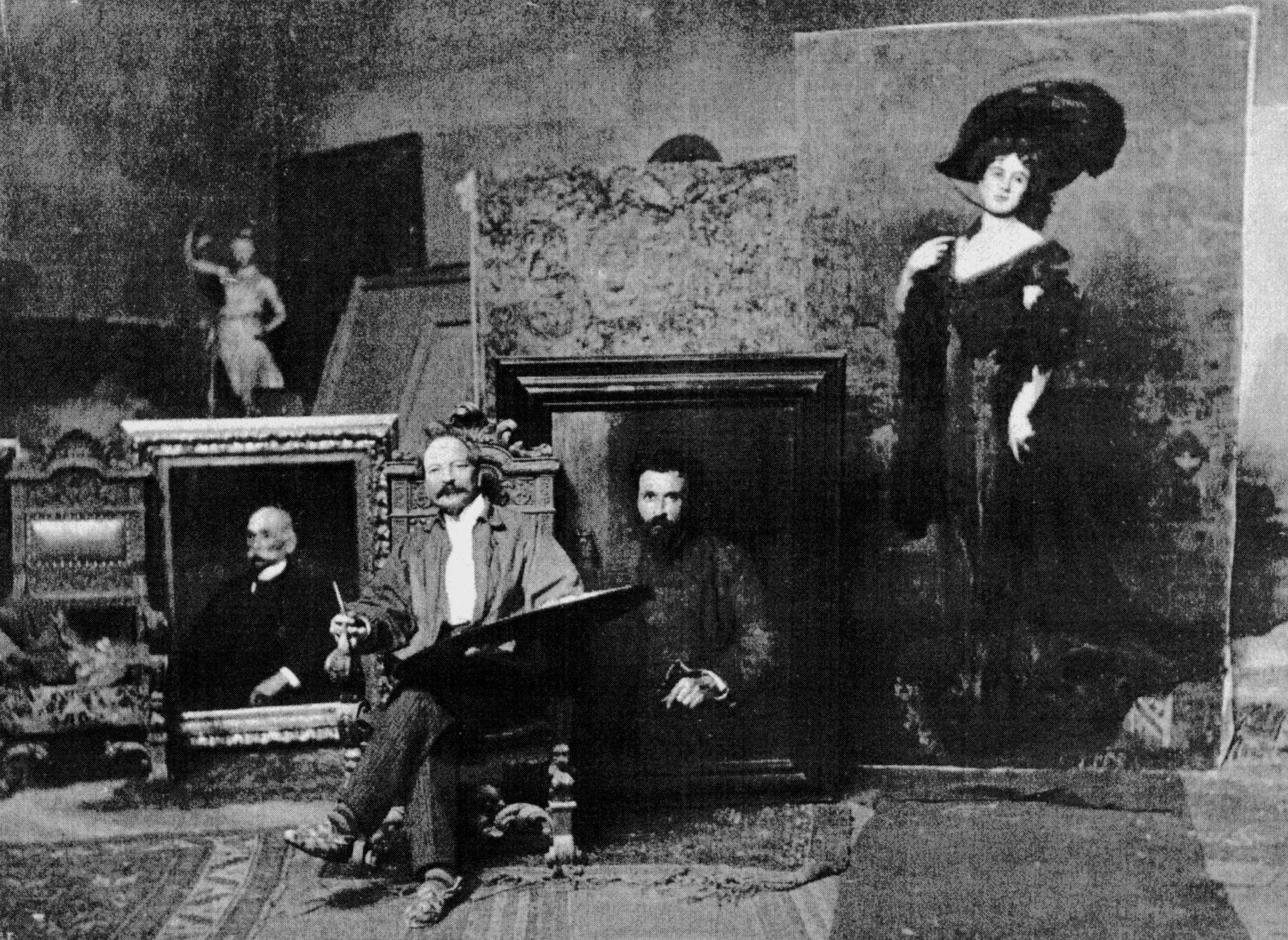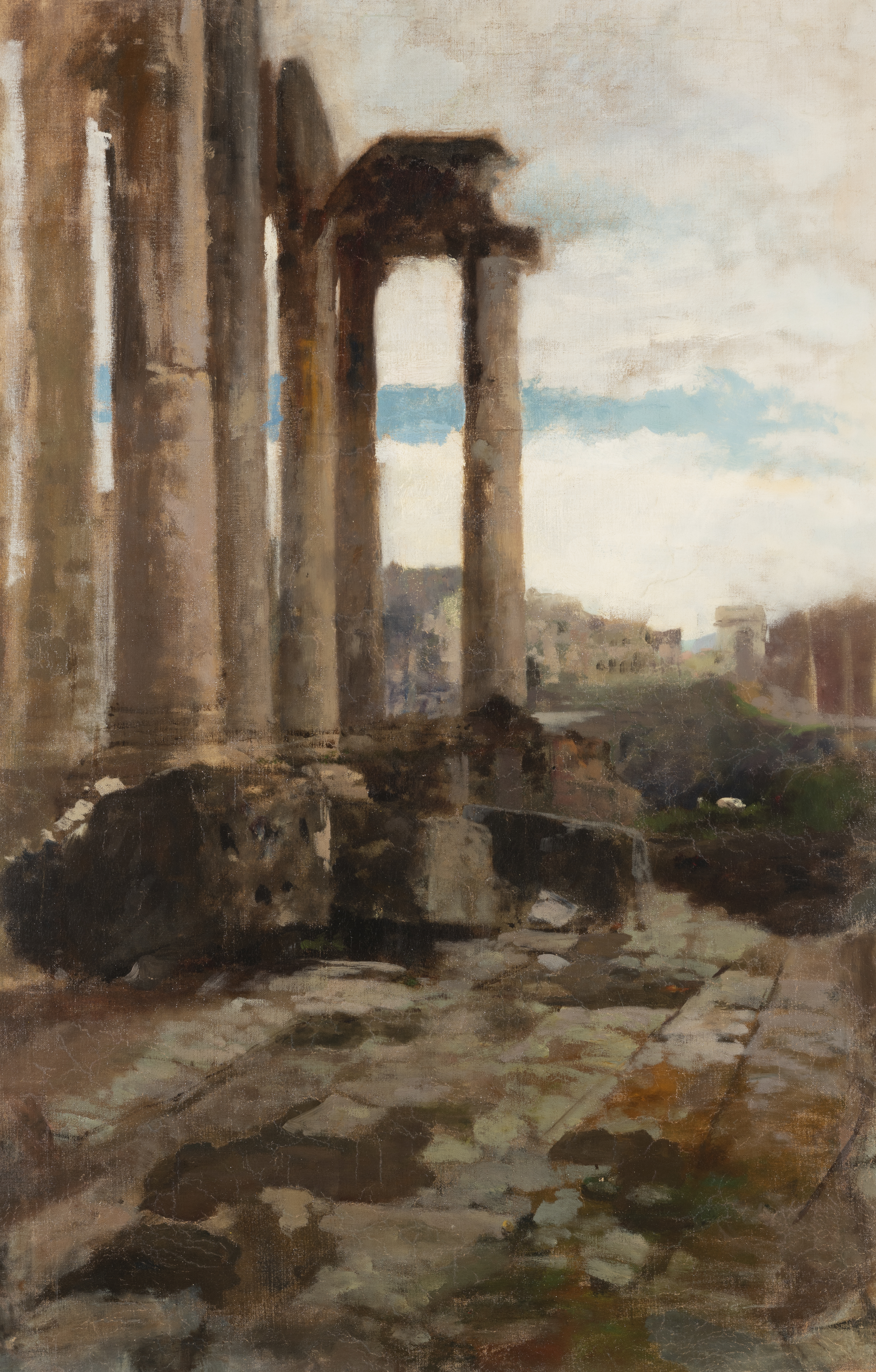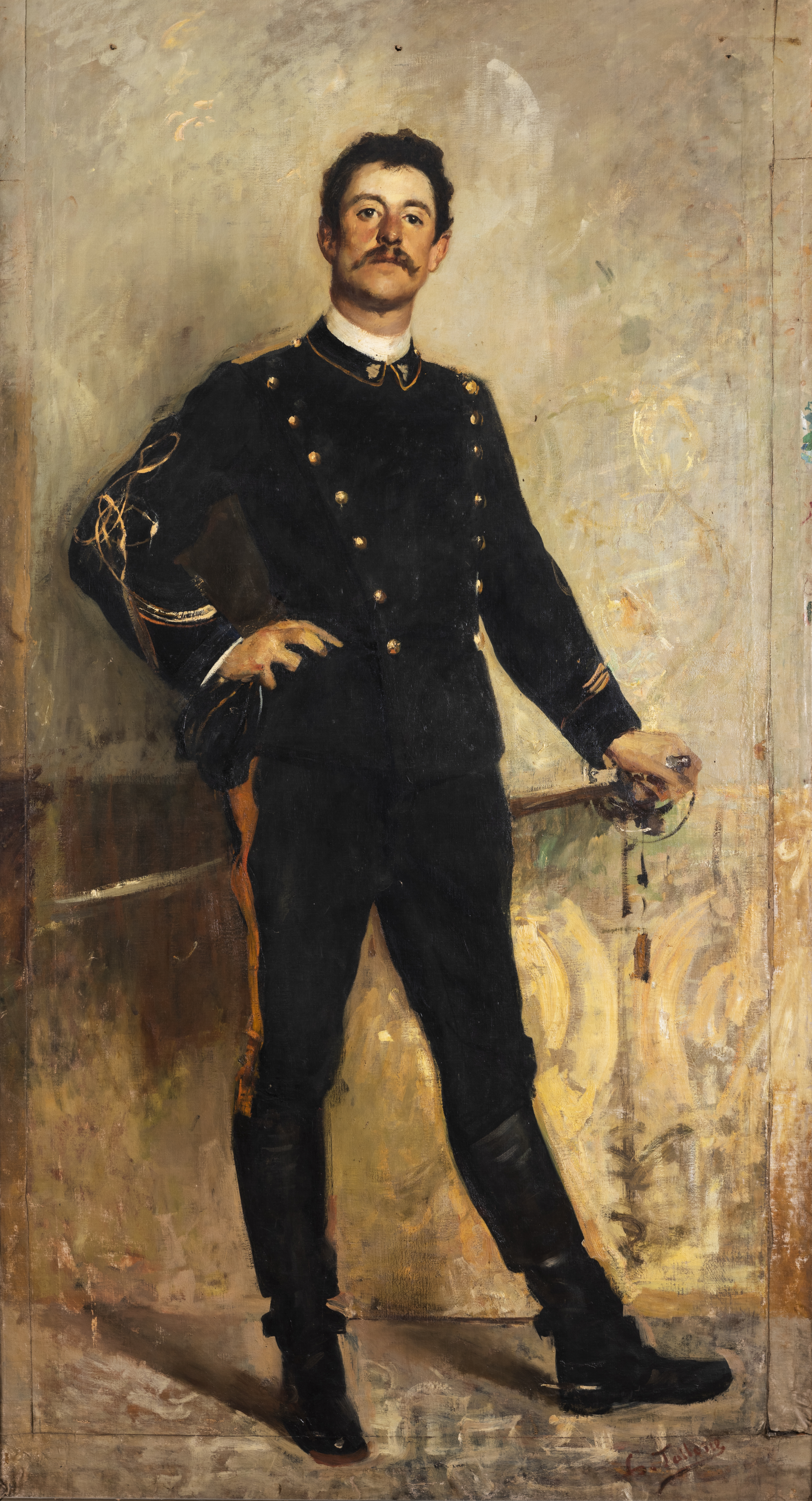
Cesare Tallone, Paesaggio del lago d’Iseo da Bossico, olio su tela, 48 x 68 cm, collezione privata
If you want to discover original artists and discover lesser-known masterpieces of art, you are in the perfect place.
In this post I take you on a discovery of Cesare Tallone, an exceptional artist who left a significant mark on the Italian art scene. Born in Savona in 1853, Tallone spent his youth between Alessandria and Milan, a city that profoundly influenced his artistic training.
Read to the end as we explore together this artist’s extraordinary career as a portrait painter and discover what contribution he made to Italian painting. Prepare to immerse yourself in the depth and expression of his paintings, which fascinated not only the Lombard bourgeoisie, but also national and international audiences.
Cesare Tallone: the expression of the soul through portraits

Studio privato di Cesare Tallone all’Accademia di Belle Arti di Brera. Tratta da Il pittore Cesare Tallone, morto a Milano il 21 giugno. Necrologio, «L’Illustrazione Italiana», a. XLVI, n. 26, 29 giugno 1919. Milano, Archivio Tallone.
Cesare Tallone’s artistic talent began in 1872, when he decided to attend courses at the Brera Academy of Fine Arts in Milan.
His dedication and commitment to artistic practice led him to a prestigious victory in the triennial painting competition in 1879. It was in that context that he presented a historical painting, a theme he would later return to in 1883, at the Esposizione di Belle Arti in Rome. This national exhibition revealed Tallone’s skill to a wider public, highlighting his ability to deal with historical themes with mastery.
Alongside the painting ‘A Victory of Christianity at the Time of Alaric’, the artist also presented the famous ‘Portrait of Mr Bernasconi Luigi’. This much-admired work was part of the collections of the prestigious National Gallery of Modern Art in Rome. Already in this composition, we can discern some of the distinctive traits of Tallone’s portraits, such as his move away from the set figure and his immediate verism, concentrated on the psychological investigation of the subject.
From that moment, he officially began his extraordinary career as a portrait painter, becoming particularly sought after and appreciated by the bourgeoisie of Lombardy and beyond. Think, for example, of his two portraits of Queen Margherita, one of which was presented at the Universal Exhibition in Paris in 1900. The mastery with which Tallone managed to capture the soul and essence of his subjects was extraordinary, and these iconic portraits are tangible evidence of this.
However, we must not underestimate the role of teaching in the painter’s life. In 1885, Tallone accepted an appointment to teach painting at the Accademia Carrara in Bergamo. This role not only contributed to the renewal of academic art education after a long period of stagnation, but revitalised the entire artistic context of the city. A lively cultural coterie formed around Tallone, as evidenced by a series of portraits of intellectuals and bourgeoisie from Bergamo and its province, including names such as Vittore Tasca, Cesare Maironi, Emilio Gallavresi, Alessandro Tiraboschi and Guglielmo Davoglio.
This intense artistic and cultural activity led him to frequent important families living in Lovere, where he was often a guest of the Zitti family at Villa Caprera on the Bossico plateau. This residence became the ideal centre of a cultural moment in Lovere.

Cesare Tallone, Foro Romano, 1883, olio su tela, 91,5×60,5 cm, Lovere, Accademia Tadini, cat. P 318
Tallone’s interlude in Bergamo did not end until 1899, when he was appointed professor of painting at the Brera Academy of Fine Arts in Milan. His move to this city corresponded with the period in which the artist obtained the most prestigious awards of his career. In 1908, for example, he won the coveted Prince Umberto Prize with his famous ‘Portrait of Mrs Castelli’. In 1909, the Venice Biennale even dedicated a personal room to him, a tangible sign of his significant contribution to Italian art.
Two years after his death in 1919, the Brera Academy of Fine Arts wished to honour the memory of Cesare Tallone with a posthumous retrospective, promoted by his friend and colleague Vespasiano Bignami. This event was a well-deserved tribute to an extraordinary artist, whose works continue to inspire and fascinate art lovers all over the world.

Cesare Tallone, Ritratto del tenente Buffa, 1894 circa, olio su tela 225 x 120 cm, collezione privata
Cesare Tallone, with his mastery of portraying the human soul and his ability to capture the essence of his subjects, has established himself as one of the greatest portrait painters in Italian art. His artistic career spanned several stages, from winning prestigious competitions to teaching and forming a lively cultural coterie.
His artistic legacy remains a priceless treasure, an emotional journey through the depth and expression of the human soul.
If you are an art lover and exhibition lover, you cannot miss the opportunity to admire the works of Cesare Tallone and immerse yourself in the extraordinary universe of this great master of art.

